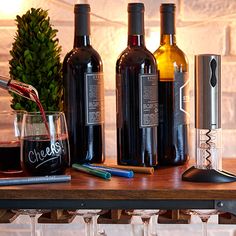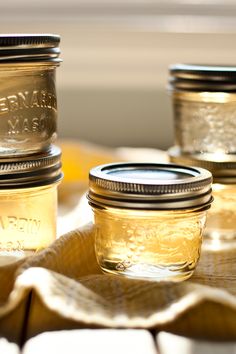Is It Possible to Cook With an Opened Bottle of Wine?

“The discovery of a wine is of greater importance than the discovery of a constellation,” Benjamin Franklin said.
“There are too many stars in the universe.” For true wine connoisseurs, wine has always been about knowledge.
Drinking wine is usually a pleasurable experience, from savoring the sound of the screw top to finding the beautiful aromas. Leftovers can quickly be heated and consumed or cooked into something else whenever it comes to food and resources. When it comes to wine, though, leftovers are a particular case. I once emptied a bottle of Pinot Noir from the refrigerator for myself. I bought it quite some time ago. I realized it had been around three and a half months after I bought it when I looked later. Clearly, it didn’t taste very nice. I had no choice except to flush the entire bottle down the drain. Then it occurred to me: what if I could cook with this wine? Do you have a case of wine that has been sealed with the first cork or a stopper for a few days? Do you think it would taste weird if you served it in a glass? Some believe that you can’t cook with wine that you aren’t drinking. But don’t you think it’d be impossible to detect signs of aging in a curry or gravy? After conducting my own investigation, I discovered that opened wine is best used in the kitchen. I still have a few red and white wine bottles that haven’t been opened. I use it to prepare a sauce/gravy by introducing the wine to the liquids and ingredients while making the food.
It’s pretty helpful to cook a quick pan dish or to have some pasta sauce on hand. The use of old wine for food preparation does not always have a set expiration date. Clear up your kitchen wine storage now to create room for it for a few weeks! Refrigerate it for up to two months and use it as a general guideline for cooking while still attempting to balance the acidity in the platter before eating.
“Bottled wine can last years beyond its ‘best by date,” according to EatByDate, “but once opened, its days are numbered.”
How Can You Tell If Your Wine Has Been Spoiled?
Wines necessitate meticulous care and attention to avoid being exposed to extreme temperatures. Temperature spikes should be avoided, especially if they are to be employed in the future.
So, how can you tell if your wine has gone wrong? Continue reading to learn more! I’ll give you some pointers to make your life easier. Variations in heat and cold temperatures may cause the cork to protrude from the wine bottle’s surface.
You can see visible signs of wine stains on the cork’s edge when looking at the cork. It’s possible that your wine was exposed to temperatures that were higher than usual. Your wine will be harmed by short-term high heat reactions of more than 80 °F. The risk of permanent wine losses increases dramatically as the temperature of the wine rises.
If you notice trickling, there are signs of dry, wine stains on the container’s rim, which could indicate a problem. I’m one of the people who believe that corked wine has a strong flavor. A stinky smelly cellar, a drenched magazine, or a moist dog all emit an odor when corked wine is around. When you finally consume the wine, it will have a characteristic corked wine flavor that is bland and dull, showing no grape qualities.
What is cork, and what is its significance? What’s the Big Deal?
Cork is manufactured from the bark of the Quercus Suber, a type of cork oak tree. In Portugal, cork oak trees are mostly grown. Cork became a popular material in the early 1700s. Then, when glass wine bottles became more popular, corks became well-known. Glass wine bottles with a practically uniform appearance and size appeared to be possible to manufacture.
Because cork is a natural substance, it is occasionally devoured by tiny microorganisms, either as part of the tree or after it has been transformed into a bottle cap. When certain microbes come into contact with the cork, they create TCA (aka 2,4,6-trichloroanisole). It’s a noxious chemical that destroys the product as soon as the wine in the container comes into contact with it. Consumers’ most common problem is purchasing flawed wines due to faults in the cork used to protect the beverage. It’s commonly referred to as corked wine. For millennia, corks and other sealing agents have been employed in some form or another to close alcohol-filled vessels.
The corks secure the wine within the container, significantly slowing the oxidation reaction and allowing the wine to mature and develop gradually. A small amount of air is essential for helping wines develop their flavors.
The best corks allow about one milligram of oxygen to reach the substance. It is precisely the right amount of oxygen to preserve the product and avoid the adverse effects of oxidation. It also aids in the removal of sulfites added during the bottling process.
Is it possible to cook with spoiled wine?

Many people ask me if they can cook with their corked or damaged wines. Yes, yes, there are, however, other inventive ways to repurpose ruined wine. So, if you don’t want to use corked wine in your cuisine, you can try any of these alternatives. In this essay, I’ll provide some fantastic wine tips. You can use a wine that is no longer suited for drinking to marinate anything, such as steak or meat. The acidity of the wine can aid in the breaking down of meat fibers. Tannins in red wine give it an extra tenderizing boost. When producing a sauce with a variety of spices and a long cooking time, the wine must have a propensity to fade and blend with various other intense flavors in the sauce. A tiny amount of barely drinkable wine will constantly be heating. “The first big rule of choosing a wine when cooking is to consider the sweetness: Use a sweet wine only if you want sweetness in the final dish, otherwise use a dry wine,” Serious Eats advises.
Is it possible to get food poisoning from drinking old or spoiled wine?
Foodborne illness occurs when you eat or drink food that has been infected with a virus, bacteria, or disease. The majority of foodborne microbes cause illness. These are frequently caused by undercooked meals, improper product handling (e.g., not wiping hands), poor sanitation in the food preparation area, or contaminated water.
Vomiting, coughing, and dizziness are common signs and symptoms of poisoning. Whether it comes to wine, though, when it’s corked, boiled, or oxidized, it’s almost always not going to taste fantastic. You won’t get food poisoning if you eat something like that.
It’s because oxygen, temperature, and the wine bottle cork fungus, which can infect any cork, can’t harm you. They won’t make you sick with staph or E. Coli, which are common food poisoning bacteria.
Using Old Wine in the Kitchen
Wine’s goal in meal preparation is to deepen, reinforce, and accentuate the flavor and aroma of the dish, rather than obscuring the taste of what you’ve chosen to consume.
The quantity of wine used should be considered, just as it should be for any other spice used in cooking; too little might be unpredictable, and too much can be pungent. Irrational quantities, on the other hand, are not preferred. A moderate amount of wine will enhance the flavor of the dinner.
When the food is cooking, the alcohol in the wine evaporates, leaving only the flavor. The flavor of the wine is intensified by lowering it, especially the sweetness and acidity. It’s crucial to keep an eye on whether you’ve added too much wine, as the flavor can overpower your palate.
Other Ways to Use Spoiled Wine
For those of you who don’t want to drink the lousy wine but also don’t want to throw it away, here are some creative applications that assure the wine won’t have to wait until the next evening gathering.
1) Cleaner for windows
Did you realize that stale wine becomes vinegar? Any alcohol will convert to vinegar as air enters the container and interacts with the wine. It happens when a lid is broken or in poor condition or when the wine is kept upright rather than on the side. You’ve discovered a bottle of uncorked wine, but it’s beginning to feel a little strange? It is fantastic luck for resourceful young boys who would rather waste their time and money on more alcohol than anything as mundane as dishwashing liquid. Add a couple of spoonfuls of old white wine to a spray bottle of water. Then spray the door and wipe it down with a newspaper.
2) Jelly made with wine

Try creating jelly with that old wine if you’re feeling particularly inventive today.
3) Tie-Dye is a type of tie-dye that is used to create
There’s no need to be concerned about the inks being perfectly matched. To wing, it, use the effortlessly chic wine tie-dye process. It’s a good option if you have much leftover wine because you’ll want to reduce it by a quarter or so to get a brighter color.
In any case, wrap the tee in a couple of rubber bands and drop it in to produce the pattern. Allow the wine to do its thing by creating a one-of-a-kind tie-dye effect using watercolors.
4) Fruit Fly Trap is a device that is used to capture fruit flies
Consider using this simple home remedy if you’re bothered by unusual small insects. Fill a bottle with some of the terrible wine, cover it tightly with cling film, then punch several holes around the rim.
5) Make your own compost
Wine’s acid can kill composting microbes. You should be able to find a good amount of wine in your compost pit, which should assist.
6) Prepare the marinade.
Wine (red) is also used as a marinade, which is a trendy application. It’s a great way to give everything you’re roasting a boost in flavor. All you’d need is a glass you don’t want to drink out of and a little creative thinking to start creating a delectable masterpiece.
Finally, residual wine can be stored in the fridge for one to two weeks and utilized for cooking. “Life is too short to drink bad wine,” someone wisely said. So, I’d advise, put it to good use in the kitchen! Why squander valuable wine when you could use it to produce delectable meals?
We focused on how far a bottle of wine may go wrong once it was opened throughout this piece. We’ve also been looking at ways to tell if the wine has gone badly wrong and whether it’s reached a point where it’s unfit for cooking.











